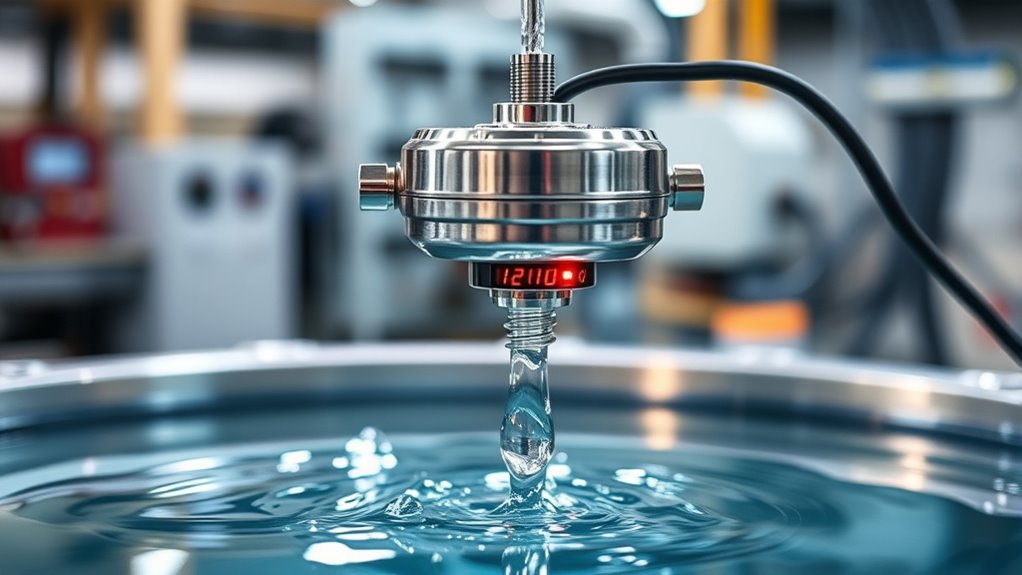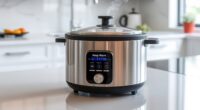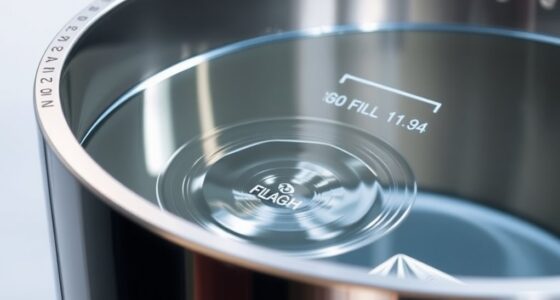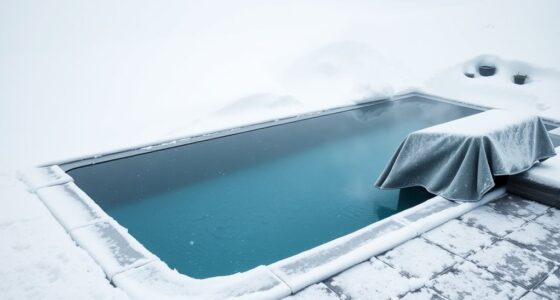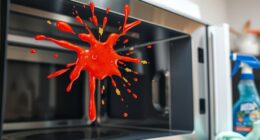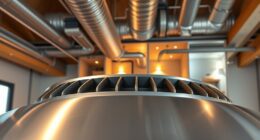Level sensors help you prevent overflow into no-man’s land by continuously monitoring fluid levels with reliable technologies like ultrasonic, capacitance, or float switches. When liquid reaches a set point, these sensors trigger alarms or automatically shut off valves, stopping spills before they occur. This proactive approach avoids costly cleanup, environmental harm, and safety hazards. Keep exploring to discover how choosing the right sensor can protect your operations and ensure smooth, overflow-free performance.
Key Takeaways
- Level sensors automatically detect overflows early, preventing spills and environmental hazards.
- Ultrasonic, capacitance, and float sensors provide reliable, real-time monitoring to avoid overflow situations.
- Early detection systems enable instant response, such as shutting valves or sending alerts, to maintain safe levels.
- Proper sensor selection tailored to the environment ensures accurate detection and reduces false alarms.
- Implementing sensor-based overflow prevention improves safety, reduces costs, and ensures regulatory compliance.
How Level Sensors Detect Unexpected Overflows
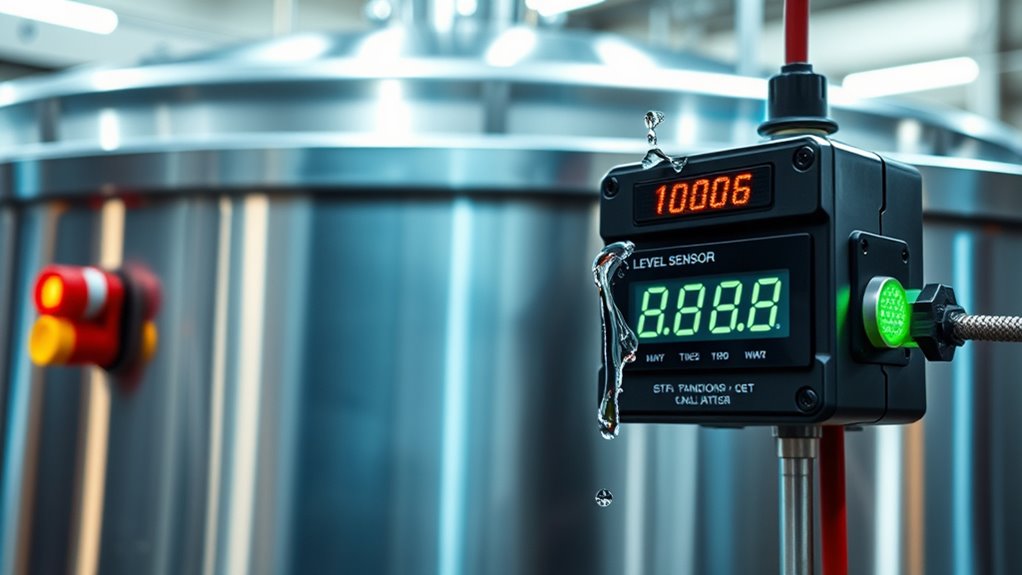
Level sensors play a essential role in preventing unexpected overflows by continuously monitoring fluid levels. They work by sensing when the liquid reaches a certain point, sending real-time signals to control systems. When fluid levels rise too high, the sensor detects this change immediately. It then triggers an alert or activates an automatic shut-off valve to stop the flow. This rapid response prevents spills that could cause damage or safety hazards. You benefit from these sensors because they operate without manual intervention, providing constant surveillance. They use different detection methods like ultrasonic, capacitance, or float-based technology. By catching overflows early, these sensors help you avoid costly cleanup and maintain safe, efficient operations. Understanding the cost‑of‑ownership of different sensor types can help in selecting the most economical and reliable option for your needs.
Types of Sensors That Prevent Spillovers

To effectively prevent spillovers, various sensor technologies are designed to detect fluid levels accurately and reliably. Float switches are common; they use a buoyant component that rises with the liquid, triggering a switch when it reaches a set point. Capacitive sensors measure changes in dielectric properties as fluid levels rise or fall, offering precise detection without direct contact. Ultrasonic sensors emit sound waves and calculate the distance to the liquid surface, making them ideal for non-contact monitoring. Optical sensors use light beams to detect fluid presence at specific levels, providing quick response times. Each sensor type suits different environments and liquids, helping you maintain ideal levels and avoid costly overflows. Selecting the appropriate sensor enhances overall system safety and efficiency, ensuring your operations run smoothly and without interruption.
The Technology Behind Accurate Level Monitoring

Understanding how level sensors work relies on grasping the core technologies that enable accurate detection. Many sensors use ultrasonic waves, sending sound pulses that bounce back from the liquid surface; the device calculates the level based on the time it takes for the echo. Others use capacitance technology, where changes in electrical capacitance indicate liquid presence or absence at certain points. Some sensors rely on pressure measurements, detecting the hydrostatic pressure exerted by the liquid column. Optical sensors use infrared or laser light to identify the liquid surface by reflecting signals. The choice of technology depends on the application, liquid type, and environment. Each method offers precision, reliability, and real-time data, ensuring you get accurate level readings to prevent spills and optimize operations. Automation technologies play a significant role in improving the accuracy and efficiency of level monitoring systems.
Benefits of Early Overflow Detection in Various Industries
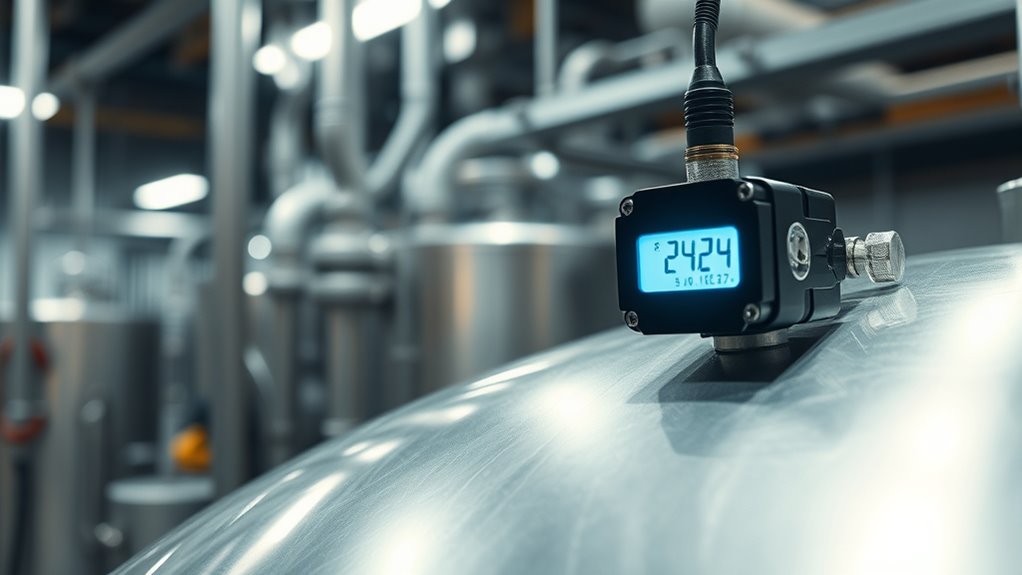
Early overflow detection offers significant advantages across industries by preventing costly spills and environmental hazards before they occur. When you catch overflow early, you reduce cleanup costs, protect ecosystems, and ensure safety. This proactive approach minimizes downtime and maintains smooth operations, saving your business money and reputation. In manufacturing, it prevents equipment damage; in agriculture, it avoids water waste; and in water treatment, it safeguards against contamination. With early detection, you gain real-time alerts that let you act swiftly, avoiding the chain reaction of failures. Plus, it helps you stay compliant with safety and environmental regulations, avoiding penalties. Implementing sensor technology enhances your ability to monitor systems continuously and respond promptly. Overall, early overflow detection keeps your operations efficient, safe, and environmentally responsible. It’s a small investment with big benefits across your industry.
Implementing Sensor Systems for Seamless Operations

To guarantee smooth operations, you need reliable level measurement techniques that provide accurate data in real time. Automated response systems can instantly adjust processes based on sensor inputs, reducing manual intervention. By integrating these technologies, you create a seamless system that enhances efficiency and prevents costly errors. Incorporating durable wooden toys can also support maintenance of equipment and environment safety in certain settings.
Precise Level Measurement Techniques
Implementing sensor systems for seamless operations requires choosing the right measurement techniques to guarantee accuracy and reliability. You need methods that consistently deliver precise readings, even in challenging conditions. Ultrasonic sensors use sound waves to measure levels without contact, ideal for corrosive or messy environments. Capacitive sensors detect changes in electrical properties, offering high accuracy for liquid or solid levels. Radar sensors utilize microwave signals that penetrate vapors and debris, providing reliable measurements over long distances. Additionally, understanding the operating hours of local stores can help plan maintenance or supply deliveries to minimize disruptions.
Automated Response Systems
Automated response systems leverage sensor data to enable real-time decision-making and swift actions, ensuring smooth operations across various industries. When your sensors detect a high or low level, these systems instantly trigger alarms, shut valves, or activate pumps without delay. This automation minimizes human error and prevents costly overflows or dry runs. You can set thresholds tailored to your specific needs, giving you peace of mind knowing your equipment responds proactively. Integration with control panels or cloud platforms allows you to monitor and adjust settings remotely. By automating responses, you reduce downtime and protect infrastructure. These systems create a seamless flow, ensuring your operations stay efficient, safe, and uninterrupted—saving you time, money, and the hassle of manual intervention. Incorporating reliable sensors ensures detection accuracy and operational dependability.
Future Trends in Level Sensing and Overflow Prevention
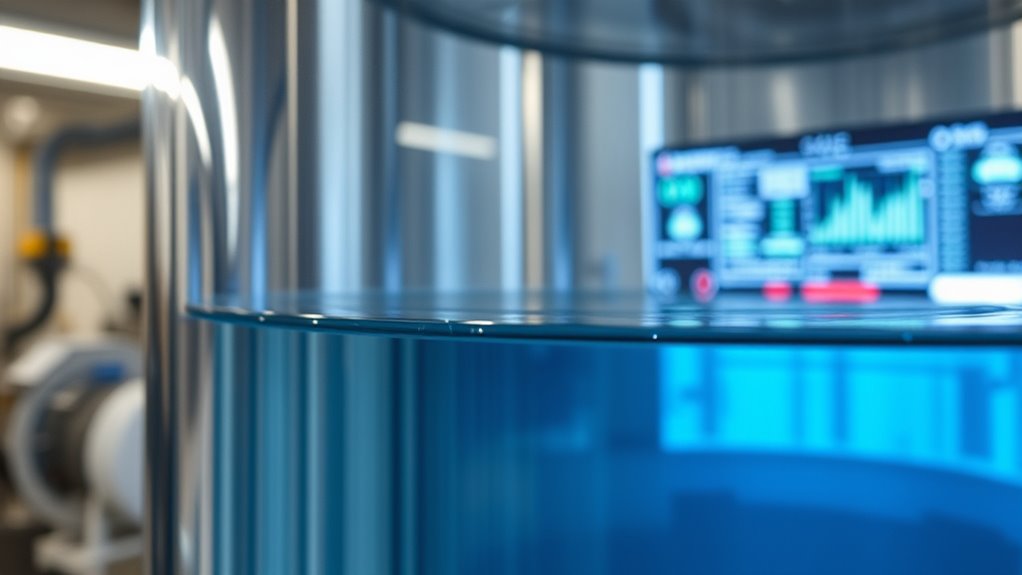
As technology advances, future trends in level sensing and overflow prevention focus on increasing accuracy, reliability, and integration with smart systems. You’ll see sensors that use AI and machine learning to predict potential overflows before they happen, enhancing preventive measures. Wireless connectivity will become standard, allowing real-time monitoring and control from anywhere. Additionally, multi-sensor systems will work together to provide more precise readings and reduce false alarms. These innovations will enable you to automate responses seamlessly, minimizing manual oversight and errors. For instance, Vetted – Nightingale Studio is developing advanced sensor solutions that adapt to changing conditions for better accuracy.
Frequently Asked Questions
What Maintenance Is Required for Long-Term Sensor Reliability?
To guarantee long-term sensor reliability, you should regularly inspect and clean the sensors to prevent buildup or debris. Calibrate them periodically to maintain accuracy, and check for any signs of wear or damage. Keep the surrounding area free of obstructions and ensure proper wiring connections. By performing these routine maintenance tasks, you’ll extend the lifespan of your sensors and keep your system running smoothly and efficiently.
How Do Sensors Perform in Extreme Temperature Conditions?
In extreme temperatures, your sensors can handle the heat or cold with proper selection and installation. They’re designed to resist thermal stress, maintaining accuracy despite harsh conditions. You’ll want to guarantee they’re rated for your specific environment and protected accordingly. Regular calibration and inspection help them perform reliably over time. With these precautions, your sensors will keep working smoothly, even when the weather tries to challenge their limits.
Are There Wireless Options for Level Sensor Integration?
Yes, wireless options for level sensor integration are available. You can easily connect these sensors to your systems without extensive wiring, making installation simpler and more flexible. Wireless sensors use radio frequency or Bluetooth technology to transmit data in real-time, allowing you to monitor levels remotely. This setup is ideal for hard-to-reach areas or when you want to reduce clutter and maintenance costs associated with traditional wired sensors.
What Is the Average Lifespan of Different Sensor Types?
You’ll find that sensor lifespans vary, with ultrasonic sensors lasting around 8-10 years, capacitance sensors about 5-7 years, and float switches typically enduring 3-5 years. Regular maintenance and environmental conditions can prolong their usefulness. Embracing reliable sensors means fewer surprises and smoother operations. By choosing the right type for your application, you ensure your system stays responsive and efficient, keeping your operations flowing seamlessly for years to come.
Can Sensors Be Customized for Unique Industrial Applications?
Yes, sensors can be customized for your unique industrial applications. You can work with manufacturers to tailor sensors to specific environmental conditions, measurement ranges, and material compatibility. Customization guarantees peak performance, reduces false alarms, and improves reliability. By specifying your unique requirements, you get sensors that fit your process perfectly, enhancing efficiency and safety. Partnering with specialists allows you to develop solutions that meet your exact operational needs.
Conclusion
By embracing advanced level sensors, you turn potential disasters into distant echoes, much like a vigilant guardian watching over your operations. These devices act as an invisible safety net, catching overflow issues before they escalate. As technology evolves, you’ll find yourself better equipped to prevent spills, save costs, and ensure seamless workflows. In this ever-changing landscape, staying ahead with dependable sensors is your best bet to keep chaos at bay—your silent heroes in the battle against overflow.
